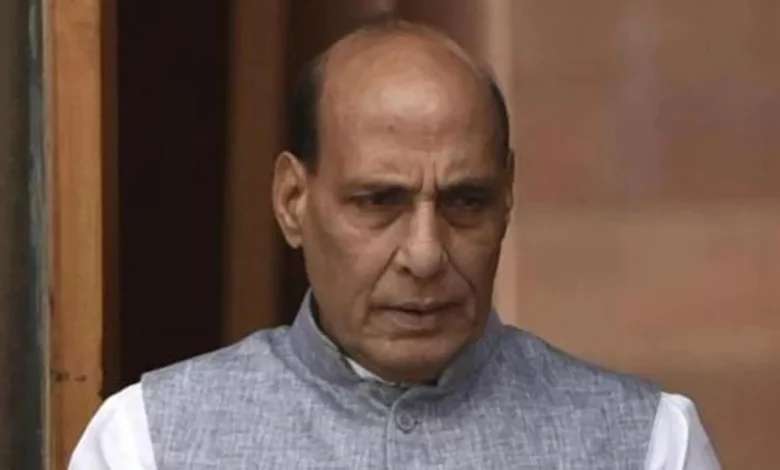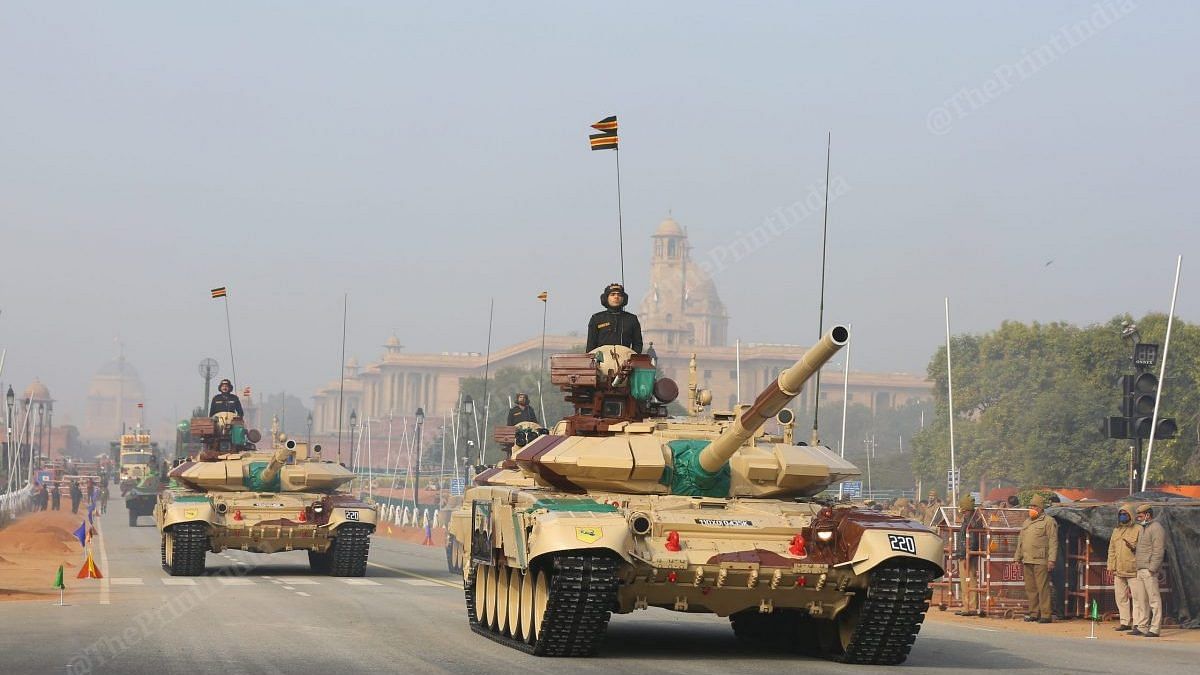In a self-reliance push, India clears military purchases worth Rs. 76,390 crores.

In a self-reliance push, India clears military purchases worth Rs. 76,390 crores.
New Delhi, India: India had cleared the buying of indigenous military equipment and purchased worth 76,390 crores on Monday, the defense ministry announced, to sharpen the country’s combat capabilities with the following warships, wheeled, armored fighting vehicles with anti-tank missile launchers, weapon locating radars, and bridge-laying tanks.
The defense purchase council (DAC), India’s premier procurement sector, has given the capital acquisition bids its acceptance of need (AoN). The action by the committee, led by union minister Singh, is the first stage in procuring military gear under Indian procurement laws. The proposals have been approved by DAC in acquisition categories that aim to foster military-industrial self-sufficiency.

“This will boost up the Indian defense sector while drastically reducing foreign spending,” the ministry stated. According to officials, the Navy’s next-generation corvettes would cost approximately 36,000 crores and be deployed for observation missions, escort operations, hunt and attack, deterrent, and coastal defense.
“These corvettes will be built on a new in-house concept of the Indian Navy using cutting-edge technology and will contribute to the government’s SAGAR (Security and Prosperity for All in the Region) initiative,” according to the ministry. Other DAC-approved projects include the purchase of new Dornier airplanes, Sukhoi Su-30MKI aero-engines, and a coast guard digitalization project.
To increase self-reliance, India has imposed a progressive embargo on importing 310 different types of weaponry and equipment, with the following muscle cars, during the last two decades.

Lightweight tanks, naval utility choppers, artillery guns, missiles, trespassing weapons and ammunition, destroyer escorts, boat cruise missiles, light fighter planes, lightweight logistics or transport aircraft, long property cruise missiles, main aircraft, inter rocket launchers, automatic weapons, sniper rifles, specific types of choppers, and aerial early warning and regulate (AEW&C) systems are in the military equipment sought to be indigenized.
India‘s overwhelming reliance on imported weaponry, mainly from Russia, has been exposed by the ongoing Russia-Ukraine crisis, and India’s military and strategic organizers are getting to grips with issues like how the war could affect the country’s military readiness, alternative sources of military weapons and hardware, and speeding up the indigenization drive to become self-reliant.
It was reported, that the critical thoughts from the Russia-Ukraine disagreement include the immediate need for weapon diversification, maximum possible indigenization of spares and subsystems to maintain Russian-origin equipment usable, and, most pertinently, remaining laser-focused on getting the Atmanirbharta (ego) to meet India’s growing defense needs.
The DAC granted the Acceptance of Necessity to procure 36 thousand crore rupees worth of Next Generation Corvettes (NGCs). These NGCs would be built using the latest shipbuilding technology and based on the Indian Navy’s new in-house design, contributing to the government’s initiative of Security and Prosperity for All in the Area (SAGAR).
The DAC granted Acceptance of Necessity for the production of Dornier planes and Su-30 MKI engines. The DAC has authorized the Digital U.s. Coast project under the Buy Indian category. The Coast Guard will develop a pan-India for the secure network for digitizing different surface and aviation operational, logistic, finance, and HR procedures.
ACCORDING TO THE STATEMENT, the DAC approved the purchase of next-generation corvettes (NGCs) for the Indian Navy at a cost of roughly Rs 36,000 crore. Surveillance missions, escort activities, deterrence, Sea Action Group (SAG) processes, hunt and assault, and coastal defense are just some of the duties that these NGCs will play.
According to a statement from the ministry, the NGCs would be built based on a novel in-house design by the Indian Navy, employing cutting-edge shipbuilding technology. The DAC authorized a Hindustan Aeronautics Limited (HAL) proposal to produce Dornier aircraft and Su-30 MKI aviation with a focus on increasing indigenization.
The DAC has given the Indian Army new approval to purchase Rough Terrain Fork Lift Trucks (RTFLTs), Bridge Laying Tanks (BLTs), Roller Armoured Fighting Vehicles (Wh AFVs) with Anti-Tank Directed Missiles (ATGMs), and Weapon Locating Radars (WLRs) from domestic sources, with an emphasis on indigenous development and design.
“The DAC has authorized the ‘Digital Coast Guard’ project under the ‘Buy’ (Indian) category in accordance with the government’s main purpose for digitalization in defense,” the ministry stated. “Under this project, the Coast Guard would develop a pan-India to have a secure site for digitizing different maritime and aviation activities, transport or logistics, finance, and HR activities,” it added. MPB RC PTI.
To increase self-reliance, India has imposed a progressive embargo on the import of 310 different types of weaponry and equipment, with the following vessels, during the last two years.
Lightweight tanks, naval power choppers, artillery guns, missile systems, loitering munitions, anti-ship missiles, ship-borne cruise missiles, gentle combat aircraft, transport planes, long-range property missile systems, trainer aircraft, inter missile launchers, assault rifles, automatic weapons, specific types of helicopters, and airborne- borne proper warning and control (AEW&C) systems are in the military equipment sought to be indigenized.

India’s overwhelming reliance on imported weaponry, mainly from Russia, has been exposed by the ongoing Russia-Ukraine crisis, and India’s military and strategic organizers are wrestling with problems like how the war might affect the country’s military readiness, alternative sources for military equipment, and speeding up the industrialization drive to become self-reliant.
It was reported, that the key takeaways from the Russia-Ukraine dispute would include the urgent need for weapon diversification, maximum possible indigenization of spares and subsystems to keep Russian-origin hardware which is serviceable, and, most notably, remaining laser-focused on attaining atmanirbharta (self-reliance) to satisfy all the requirements of India’s growing defense needs.






